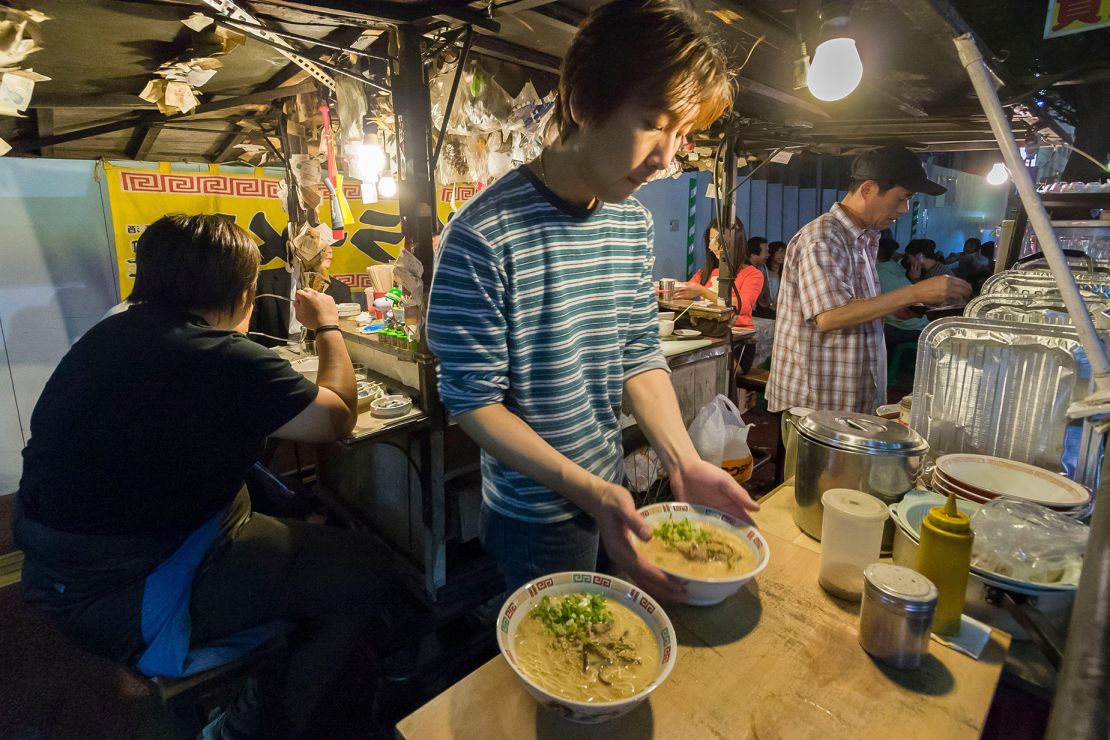Fukuoka, Japan’s sixth largest city by population, has more open-air food stalls than the rest of the country combined.
These stalls are called yatais, and they’re an indelible part of what makes Fukuoka’s food scene so special.
Think of them as a sort of foodie Cinderella.
Yatais are assigned specific, highly coveted spots at major pedestrian thoroughfares.
However, they can only operate at night and must completely dismantle or remove their stalls before morning commuters begin swarming the sidewalks. The only clue that a yatai might materialize later is a ground-level water spigot.
But at night, the city transforms. Carts and vans seem to appear by magic, serving everything from gyoza (in Fukuoka, these popular dumplings are served in mini, bite-size form) to ramen to meat skewers to a local chicken hotpot stew called oden, paired with ice-cold Asahi or Sapporo beers.

“Yatai is the best place to make friends,” says Nick Szasz, a Canadian-born longtime resident of Japan who runs the English-language website Fukuoka Now. “Especially in the winter.”
Most carts can only fit between 6-10 people, who are encouraged to squeeze in together on shared benches or closely crammed stools. During the cold season, many yatais keep customers warm by enclosing their benches in thick curtains, making the experience even more cozy.
While the Japanese sometimes have a reputation for polite formality, Szasz explains that it’s considered good manners to chitchat with strangers while crammed in together at a yatai. Some carts even have the option to buy drinks for other diners – or the chef! – as a menu item.

Post a Comment